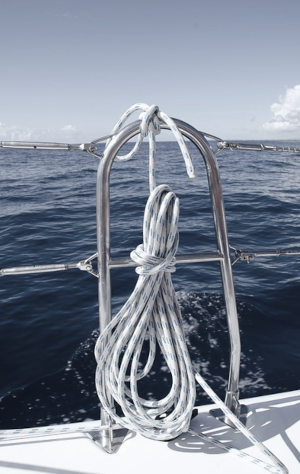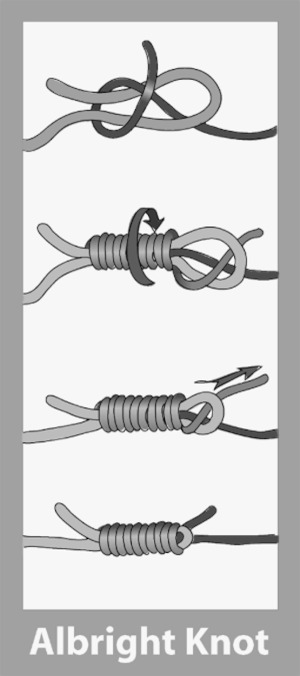Best Fishing Knots for Deep Sea Adventures
Besides having a great hook, everyone knows you also need a great knot to actually catch fish. Likewise, the right knot will also influence your fishing session’s outcome. So, if you’re going for a deep sea fishing trip, what are the best usable knots?
Before You Start Tying
There are four important deep sea knots, which are the Palomar knot, Albright knot, Bimini twist, and Haywire twist. However, there are quite a few things that you need to remember before trying these knots out.
- First, you need to make sure your line is wet enough. A damp rope reduces the damage that may occur on your line as you pull. Likewise, that decreases the chances of knot malfunction.
- Second, when tying the knot, your pulls should be gentle but strong. You can progress to stronger jerks when testing out your end product.
- Lastly, re-tie your knots before your fishing trips.
Palomar Knot
If you’re a fishing enthusiast, you’re probably familiar with the Palomar knot by now. Many people have labeled this as the best fishing knot. It’s easy, uncomplicated, and highly durable. You can use it in attaching a hook to your line.
- Ready a double 6-inch line.
- Pass the end of your look through the hook’s eye.
- Do an overhand knot as the hook hangs from the bottom.
- Slide a loop of line over the hook while holding the overhand knot.
- Place the loop above the hook’s eye.
- Tighten the knot by pulling on the line and tag end.
Albright Knot
Known as a highly reliable knot to join two unequal lines, the Albright knot is another must-know for deep sea fishermen. It’s perfect when you have two different ropes that you need to connect, and it doesn’t matter if the lines are of different sizes or materials. Similar to the Palomar knot, the Albright knot isn’t complicated either.
- Take the heavier rope and create a loop out of it.
- Insert 10 inches of the other line in the loop.
- Keep the 3 lines in place using your thumb and forefinger.
- Tie the other line over itself and on both of the loop strands.
- Create 10 wrapped turns, and make sure they’re tight.
- Place the tag end back inside the loop.
- Exit the loop through the entrance.
- Hold the heavier line’s ends and pass it through the loop’s end.
- Tug on the other line to tighten your knot.
Bimini Twist
The Bimini twist is among the strongest deep sea fishing knots you can tie. If done right, it can retain 95% of its initial line power and grant you 100% line strength. A double line forms upon the creation of this knot, which ensures that even if a fish severs a strand of your line, another line is there for support.
The most optimal use for the Bimini twist is to join a line to the barrel. Fishermen often decide to partner this knot with an Offshore swivel.
- Create a loop and do twenty twists at its end.
- Glide the open end over your knee while still holding the loop ends.
- Glide the tag end over the first twists by lowering your hand.
- Guide the tag end into rolling over your column of twists until it reaches the end.
- Do an Overhand knot to initially secure the Bimini twist.
- Create 3 more Overhand knots around both of the loop’s lines to secure it.
Haywire Twist
If you want to catch toothy fish, such as barracuda, wahoo, and mackerel, the Haywire twist is your greatest option. Some people may protest that the Haywire twist isn’t a knot, but they won’t argue that it’s best used for joining a wire leader to a lure or a hook. It’s often paired with the Albright knot.
Two twists make up the Haywire twist: the haywire wraps and the barrel wraps. This combination grants the Haywire twist its reliability.
- Insert the wire in the hook’s eye.
- Hold the loop with your thumb and forefinger.
- Intersect a strand of wire with the other.
- Use your right hand’s thumb and forefinger to grab the two strands and twist.
- The wire’s standing part and tag end must intersect.
- It should be at an angle that’s more than 90 degrees.
- Create 4 haywire wraps.
- To create the barrel wraps, move the tag end until it’s next to the standing part.
- It needs to be at a right angle.
- Then, create 5 barrel wraps using the tag end on the standing part.
- Break the wire by rocking the end back and forth instead of using a plier.
Deep Sea Fishing
Besides learning how to deep sea fish, you also need to be prepared with the right gear and mindset. Likewise, research about what to expect on your fishing trip, such as the kinds of fish available in the area. More importantly, reach out to a fishing charter like Newport, Oregon Fishing Charter to make sure you get the best out of your deep sea fishing adventure.
Let’s Get Started


